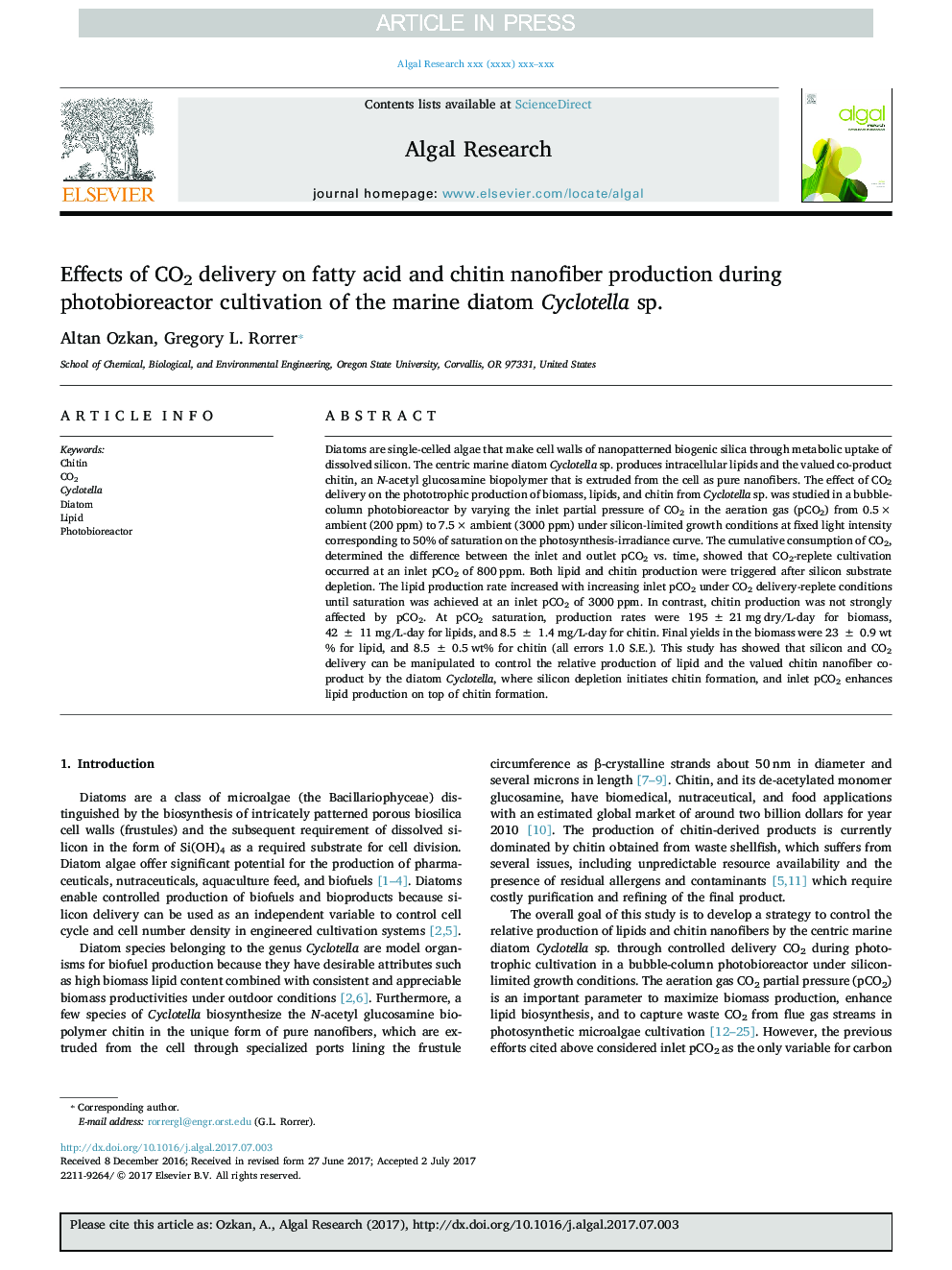| Article ID | Journal | Published Year | Pages | File Type |
|---|---|---|---|---|
| 5478310 | Algal Research | 2017 | 9 Pages |
Abstract
Diatoms are single-celled algae that make cell walls of nanopatterned biogenic silica through metabolic uptake of dissolved silicon. The centric marine diatom Cyclotella sp. produces intracellular lipids and the valued co-product chitin, an N-acetyl glucosamine biopolymer that is extruded from the cell as pure nanofibers. The effect of CO2 delivery on the phototrophic production of biomass, lipids, and chitin from Cyclotella sp. was studied in a bubble-column photobioreactor by varying the inlet partial pressure of CO2 in the aeration gas (pCO2) from 0.5 à ambient (200 ppm) to 7.5 à ambient (3000 ppm) under silicon-limited growth conditions at fixed light intensity corresponding to 50% of saturation on the photosynthesis-irradiance curve. The cumulative consumption of CO2, determined the difference between the inlet and outlet pCO2 vs. time, showed that CO2-replete cultivation occurred at an inlet pCO2 of 800 ppm. Both lipid and chitin production were triggered after silicon substrate depletion. The lipid production rate increased with increasing inlet pCO2 under CO2 delivery-replete conditions until saturation was achieved at an inlet pCO2 of 3000 ppm. In contrast, chitin production was not strongly affected by pCO2. At pCO2 saturation, production rates were 195 ± 21 mg dry/L-day for biomass, 42 ± 11 mg/L-day for lipids, and 8.5 ± 1.4 mg/L-day for chitin. Final yields in the biomass were 23 ± 0.9 wt% for lipid, and 8.5 ± 0.5 wt% for chitin (all errors 1.0 S.E.). This study has showed that silicon and CO2 delivery can be manipulated to control the relative production of lipid and the valued chitin nanofiber co-product by the diatom Cyclotella, where silicon depletion initiates chitin formation, and inlet pCO2 enhances lipid production on top of chitin formation.
Related Topics
Physical Sciences and Engineering
Energy
Renewable Energy, Sustainability and the Environment
Authors
Altan Ozkan, Gregory L. Rorrer,
